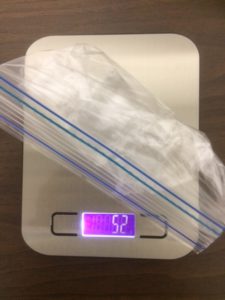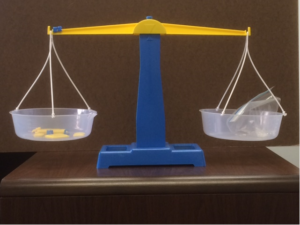Purposes
[stextbox id = “info”]1. To help the teacher and students become aware of students’ thinking about whether mass changes during phase change.
2. To provide students with data that supports or challenges their thinking.
[/stextbox]Description
[stextbox id = “info”]Students predict whether the weight of an ice cube will change or stay the same when it melts. They then compare their predictions to what actually happens.
[/stextbox]Questions to Ask Students
[stextbox id = “info”]Why did you predict that the weight of the ice would increase? Decrease? Stay the same?
[/stextbox]Student Thinking
[stextbox id = “info”]- Students may think that the weight of the ice cube will decrease when it melts because they think that solids are heavier than liquids (Durmuş & Bayraktar, 2010; Lee et al., 1993; Stavy, 1990b).
- Students may think that the size of particles changes during phase change (Aydeniz & Kotowski, 2012;Özmen, 2011; Özmen & Kenan, 2007; Tsai, 1999). For example they may think that particles get bigger as the water warms up.
Implementation Tips
[stextbox id = “info”]- Encourage students to record their predictions in their science notebooks.
- Use a couple of ice cubes (at least 50 grams) so that the liquid water present after melting is obvious.
- Before weighing and melting, put the ice cube in a plastic baggie to prevent evaporation. Assure the students that the baggie is water tight and air tight.
- Remove the baggie from the scale while the ice melts, which may take a couple of hours. Plan for students to work on something else during this time, perhaps assigning a student to check on the progress and report to the class every 15 minutes.
- Water will most likely condense on the outside of the plastic baggie. Wipe it dry with a paper towel before weighing it (both prior to and after melting). Do not leave the baggie on the scale while the ice cube is melting. Otherwise water may condense on the scale as well.
- Students may think that water leaked through the baggie. The teacher can fill a separate baggie with water and demonstrate that the baggie is water tight. Another option is to freeze water with food coloring in it, so the ice cube is colored. When water is wiped off the outside of the baggie, students will see that the water is not colored.
- Be sure to use a scale with adequate sensitivity.
- If you do not have an electronic scale, the activity can be done with a two-pan balance. Many elementary schools have a balance like the one shown below, which works well for the activity.


